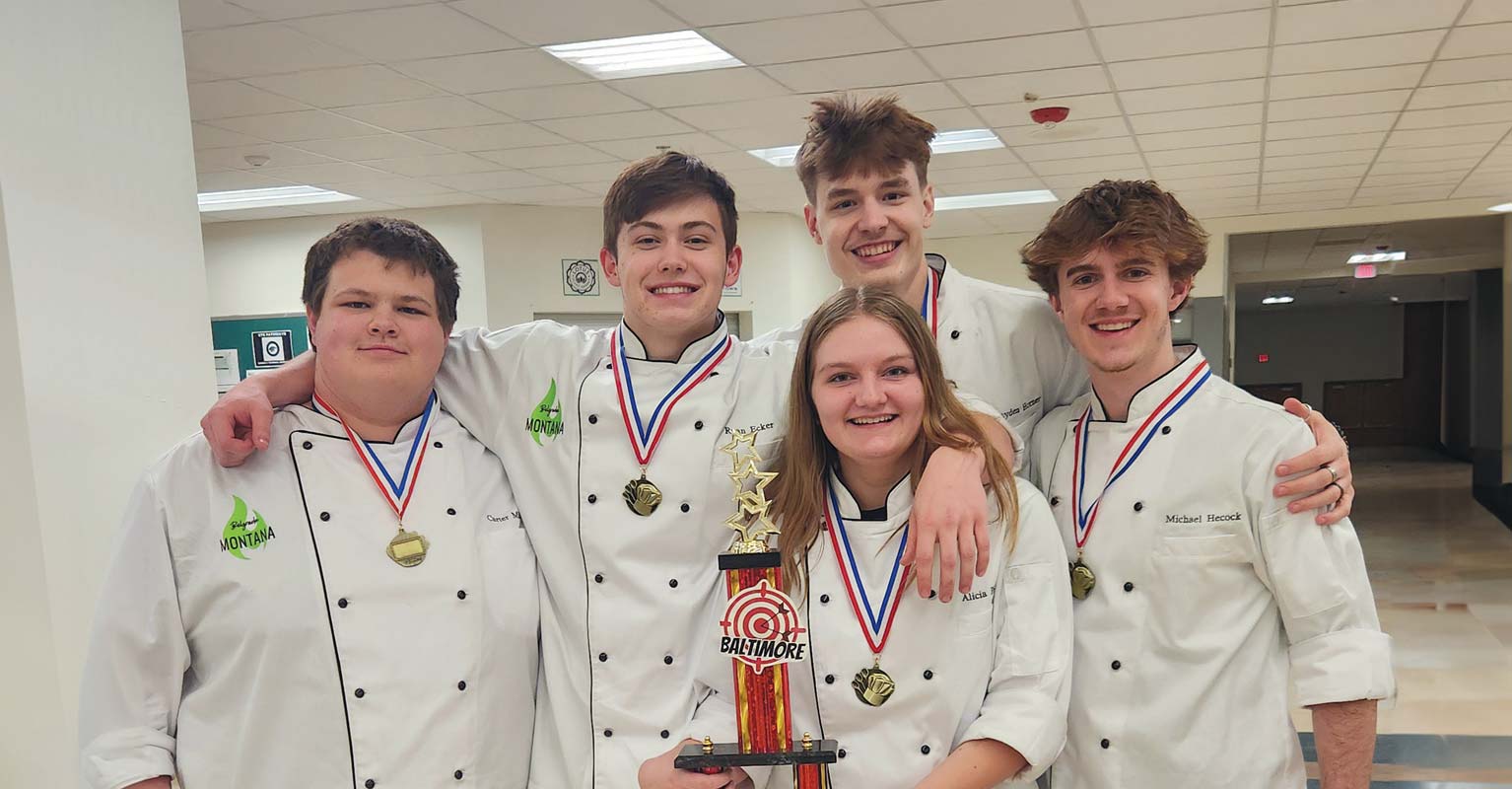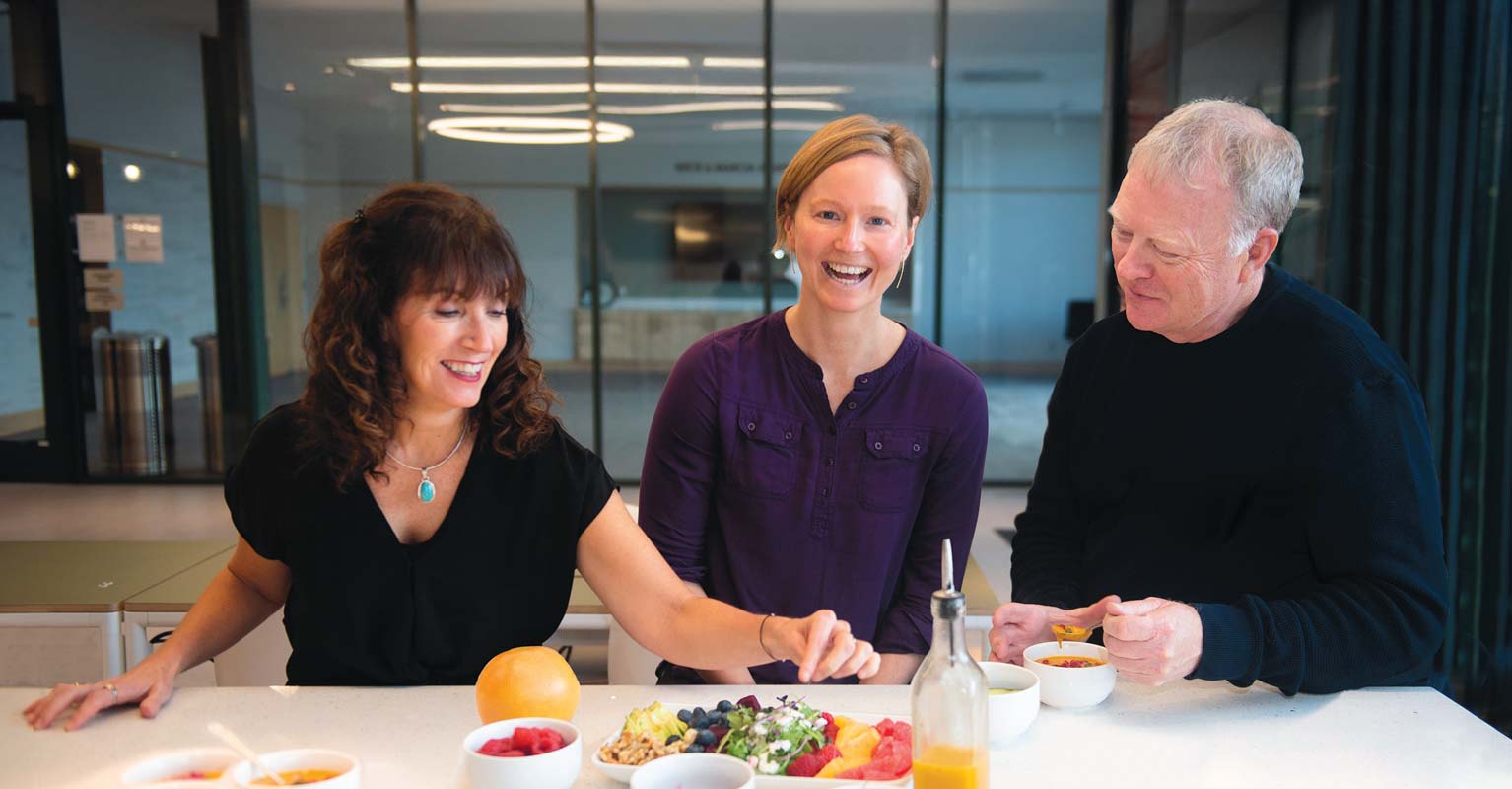How does one wild game dinner change the world of food? One story at a time.
It was quite possibly the highest-grade dinner ever to come to Montana. Where else could you indulge in exotic meats, often unavailable for purchase, many of which were shot, caught, or speared by the very chefs preparing them?
Grilled lionfish with a mango chutney over coconut rice; beavertail pho; javelina tacos and Gila trout tostadas; homemade custard with elk bacon brickle. These were just some of the world-class delights at the Backcountry Hunters and Anglers Field to Table Dinner hosted on a hot Missoula June night as a part of BHA’s 2021 North American Rendezvous. This year,
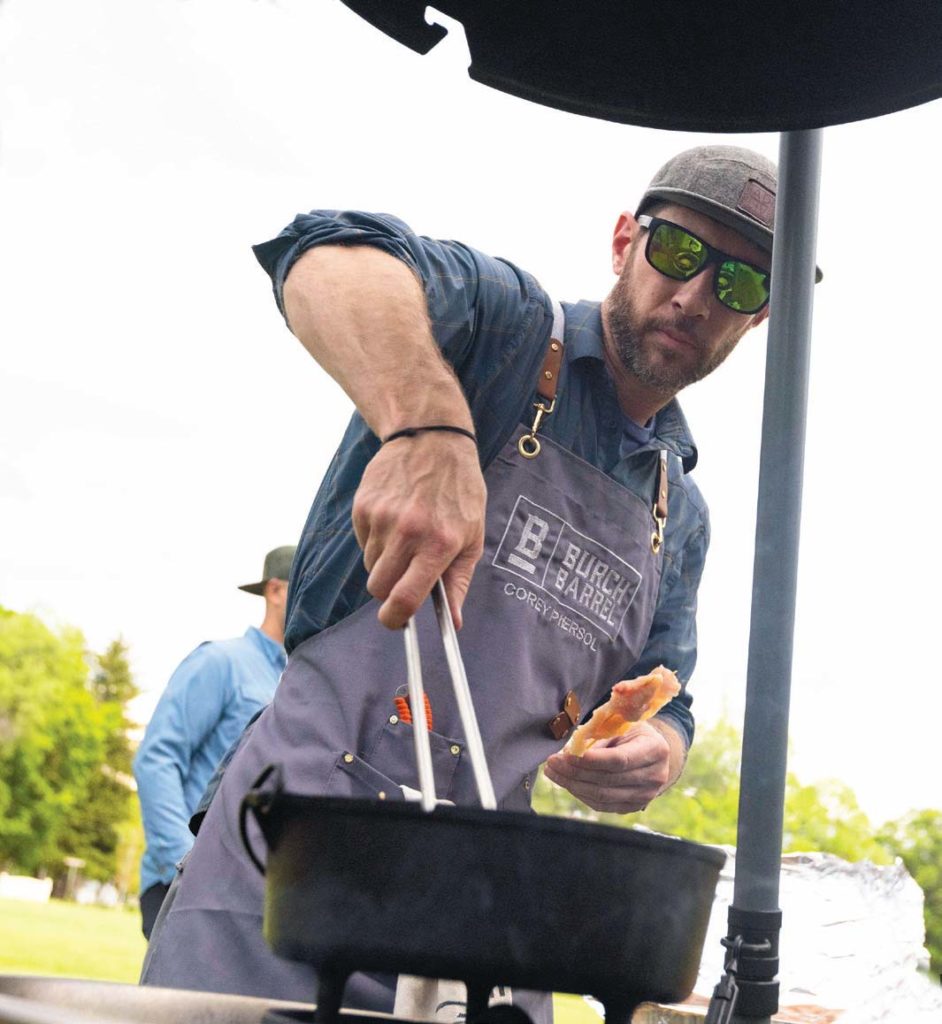
BHA will host its Rendezvous May 12–14, complete with yet another Field to Table Dinner where 14 of North America’s top wild game chefs bring their own meats and their A game, serving exquisite wild game dishes in a multicourse dinner. BHA is an outdoor/conservation organization with nearly 40,000 avid outdoorsy members. This culinary-diverse dinner is the most potent way of funding the organization’s goal of keeping public lands in public hands.
Now, as someone who had never before tasted bighorn sheep, beavertail, or bear sausage, this rare feast went far beyond the heralded dishes. Despite its low-key, almost barbecue setting, it proclaimed a vision on the state of how food today should be looked at, for hunters and nonhunters alike. For hunters, it brought back the adventures, the thrill, and the flavor of the harvest. For nonhunters, it surprised, helping to open eyes to some of the most sustainable food in America.
Arizona chef and small game biologist Jonathan O’Dell, a competitor of the World Champion Squirrel Cookoff, told me in the crowded basement kitchen of Fort Missoula, “I am cooking the single most sustainable food in North America right now—more sustainable than agriculture. The key is protecting the system we have, helping all of nature. People don’t understand how much money hunters and anglers like us [contribute to] fund nature.”
Put another way, wild game, in all its forms, is the new connector of modern carnivores everywhere. And the future is looking brighter.
“More and more people are doing better things with [wild game], walking away from the crock pot and cream of mushroom soup,” said Virginia chef Wade Truong with a smile. People don’t always connect with their food. But with hunting, it’s nearly impossible not to.
This connection to food and the creativity it inspires were on full display during the Field to Table Dinner. Each chef told stories tableside as they cooked and served their entrees. In many ways, these tales added seasoning that few supermarket foods could match.
In the end, it was a gathering only food creates. As attendee Jamie Schumacher said, “I don’t have the vocabulary to tell you how good it was.”
On this night, the food seemed to have a higher purpose than just taste. And in so many ways, every plate closed the circle—the circle that makes eating whole again—from the knowledge of its origins, to the creativity of its cooking, to a greater reward of eating what you played a part in.
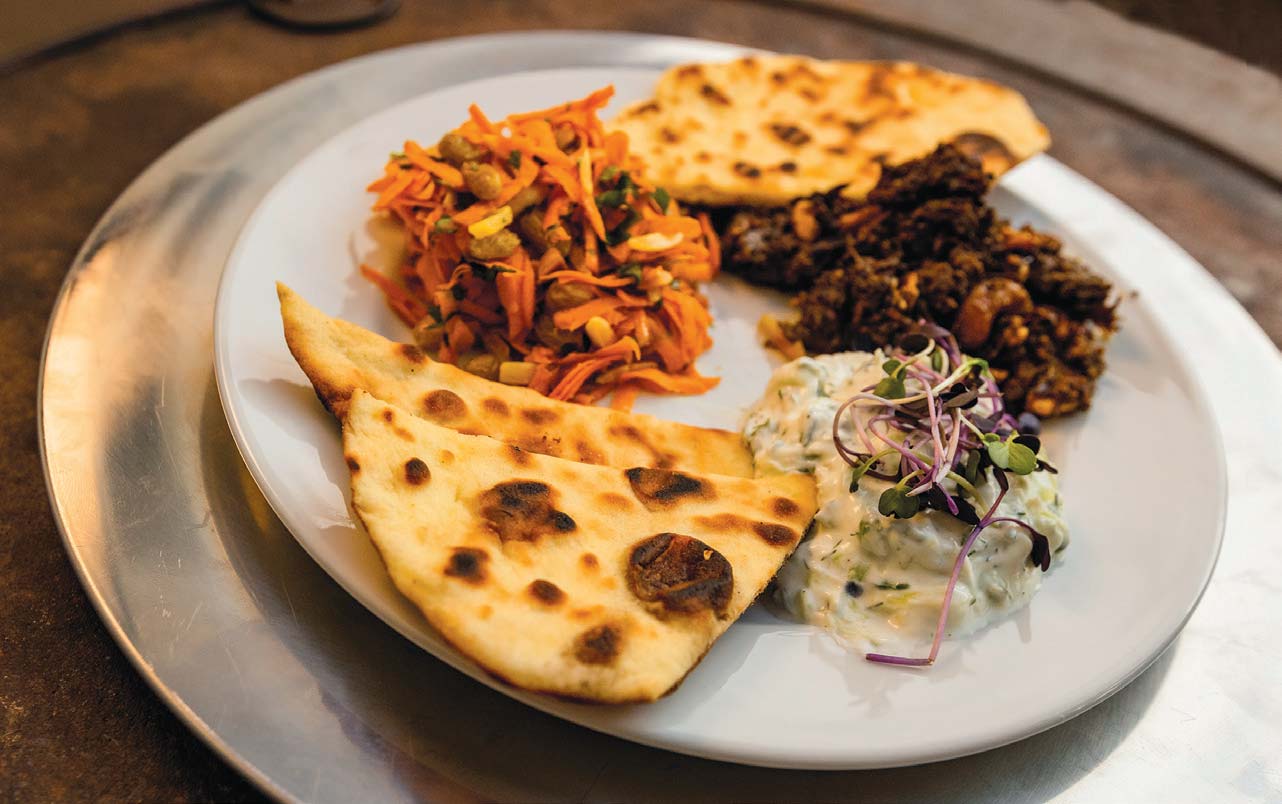
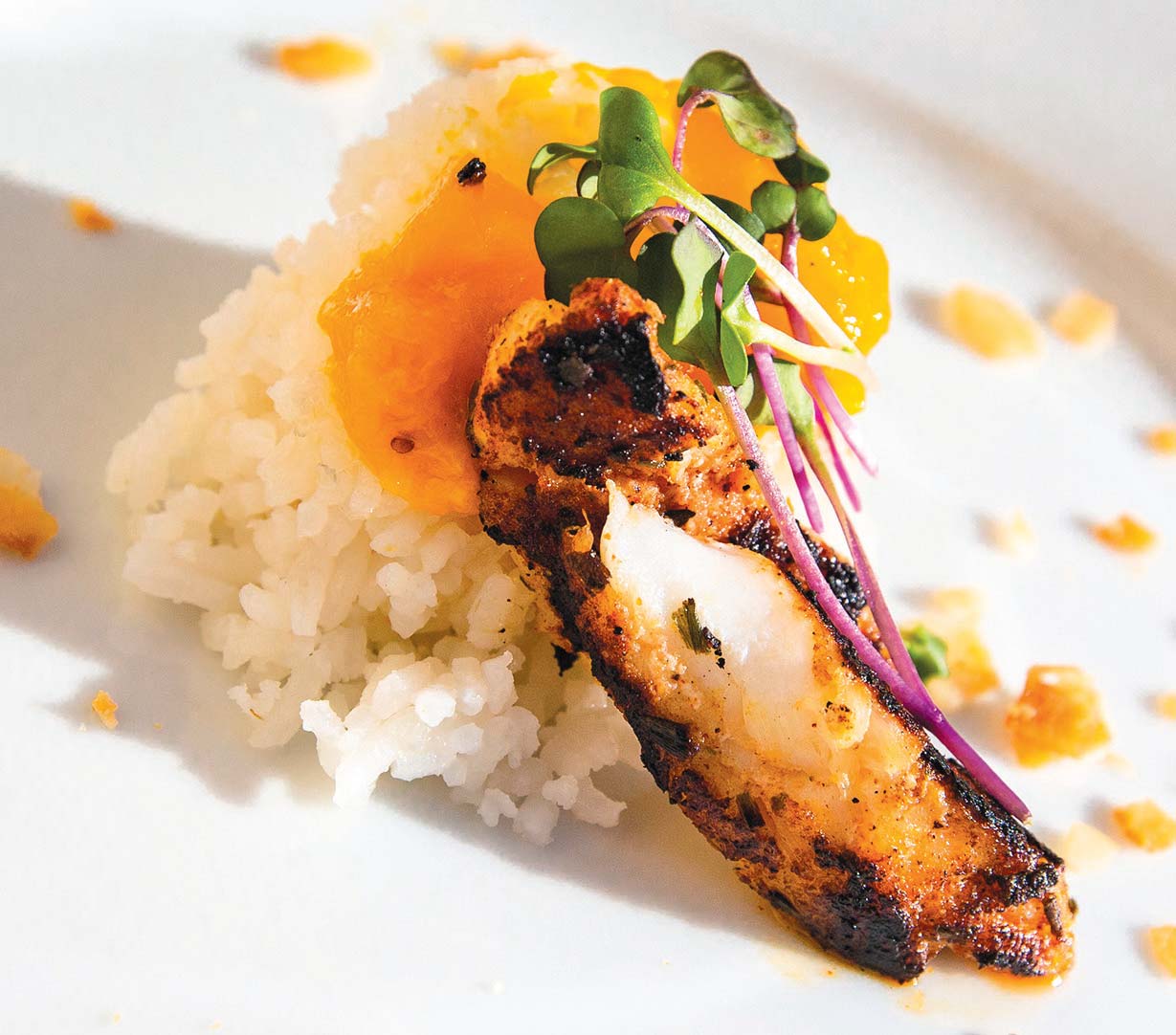
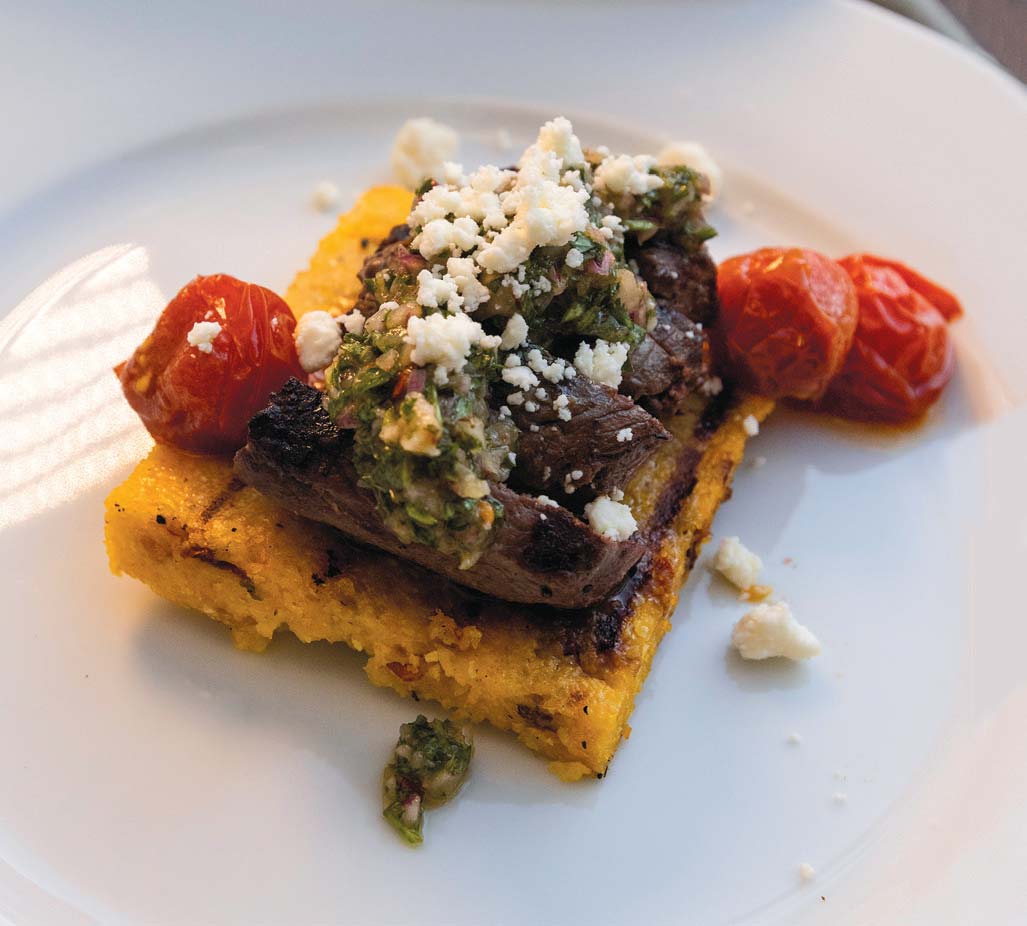
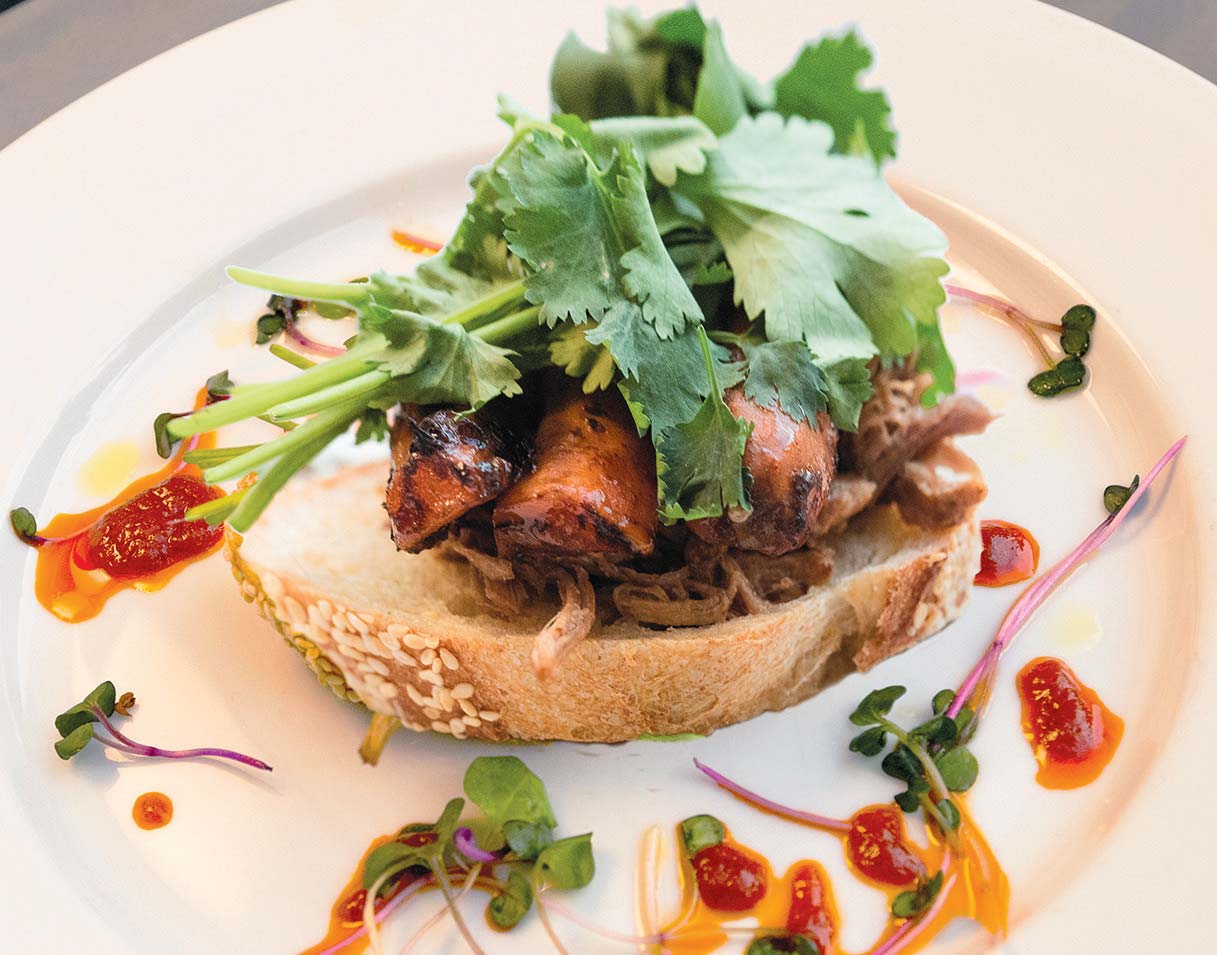
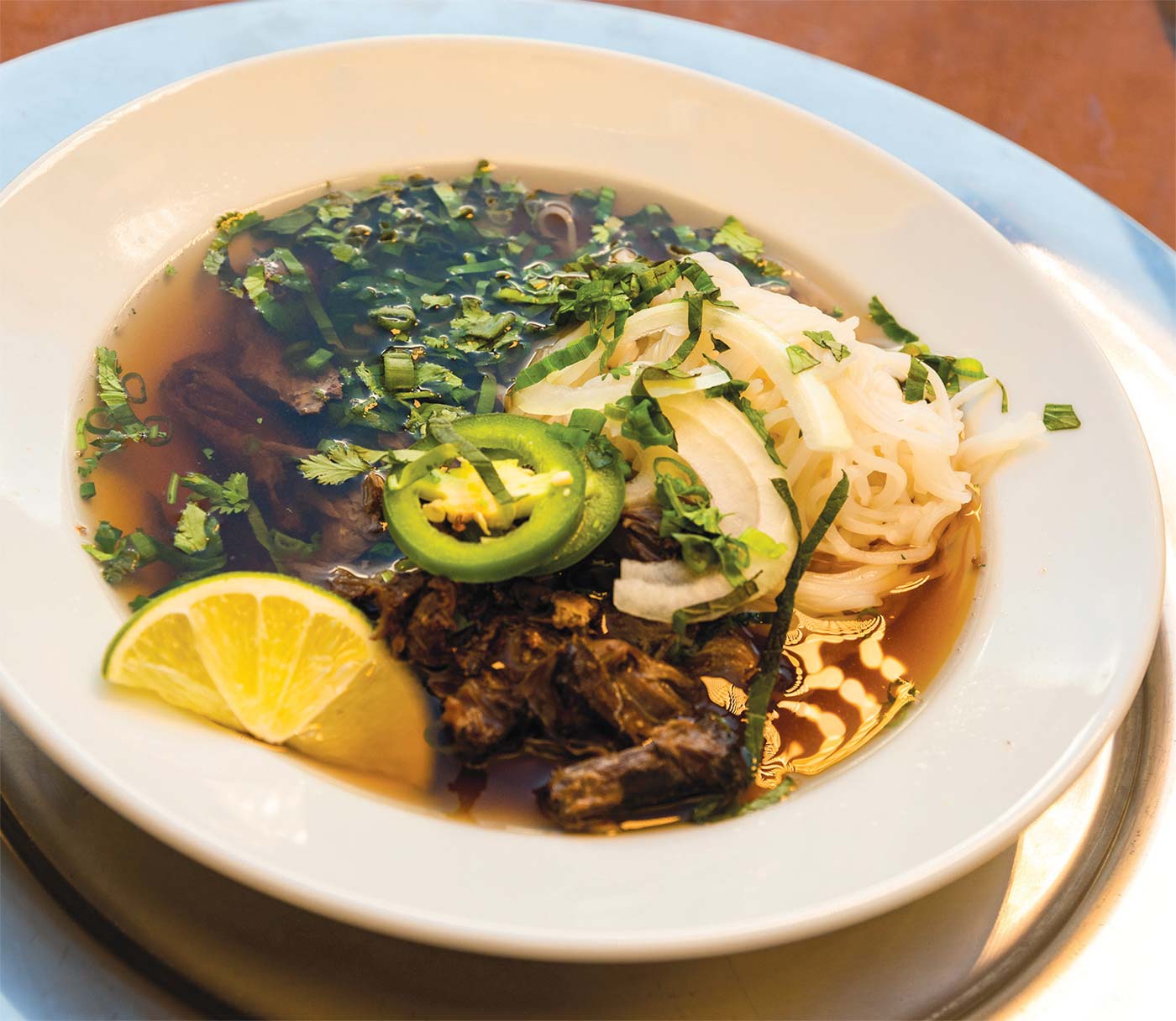
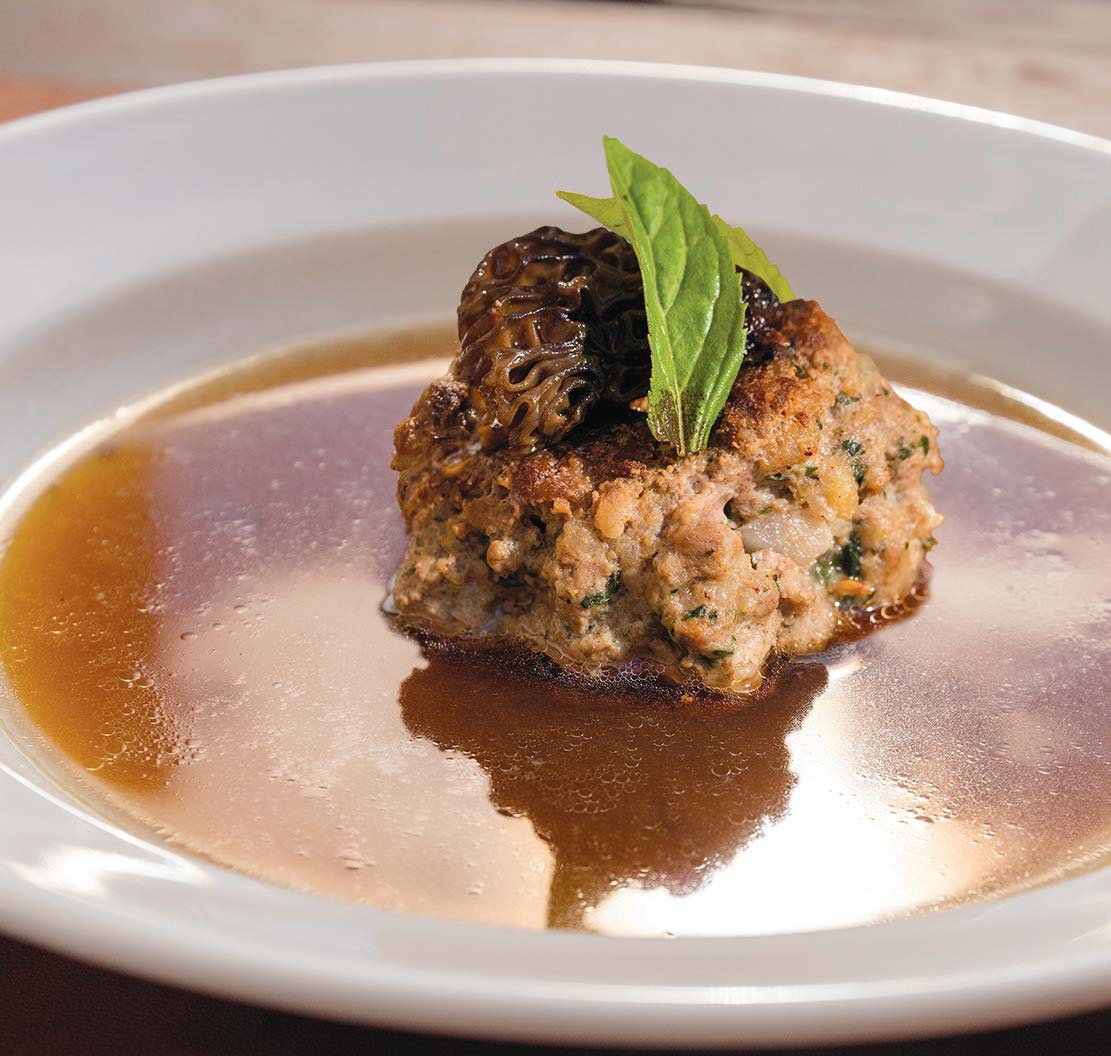
THREE STORIES FROM THE HUNT
Erika Berglund
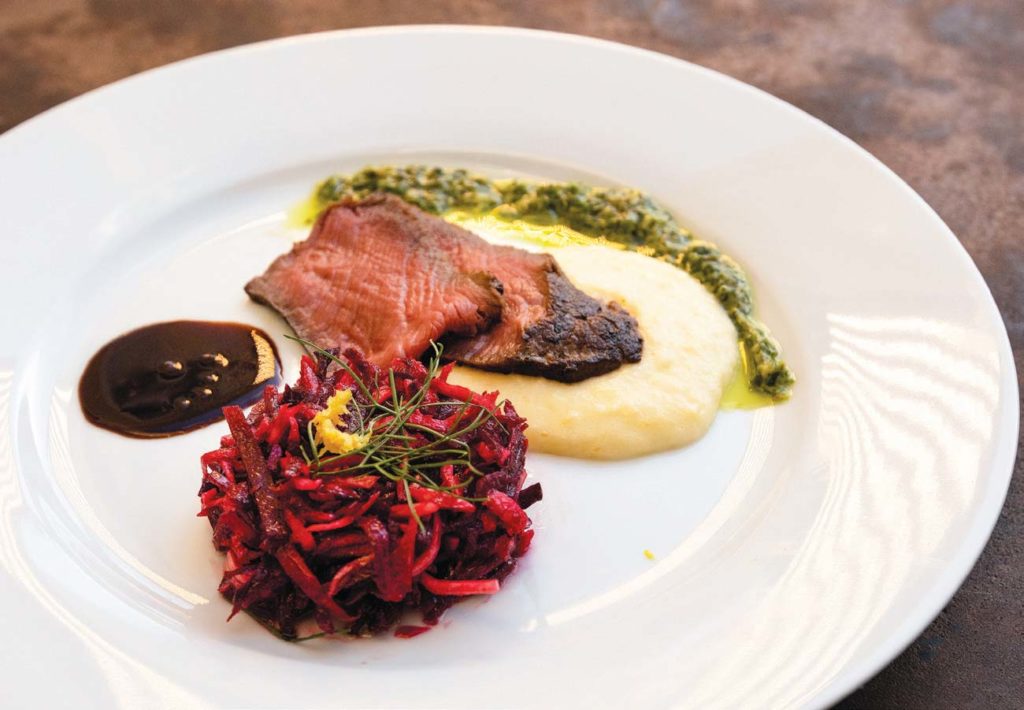
Missoula
Home chef, researcher at JG Research and Evaluation
Seared Elk Backstrap with Arugula Salsa Verde, Red Wine Reduction, Pomme Purée, and Local Root Vegetable Salad
Wild game not only can nourish us physically, but the process that brings it to a plate—from hunting, to breaking down, to packing out, to butchering, to sharing a meal—can nourish our relationship with wild places and each other. The elk backstrap I brought was from a good bull my partner, Sawyer, shot in the Missouri River Breaks on the second day of the season. It was sub-freezing, snowing, and a load to drag out indeed.
Anna Borgman
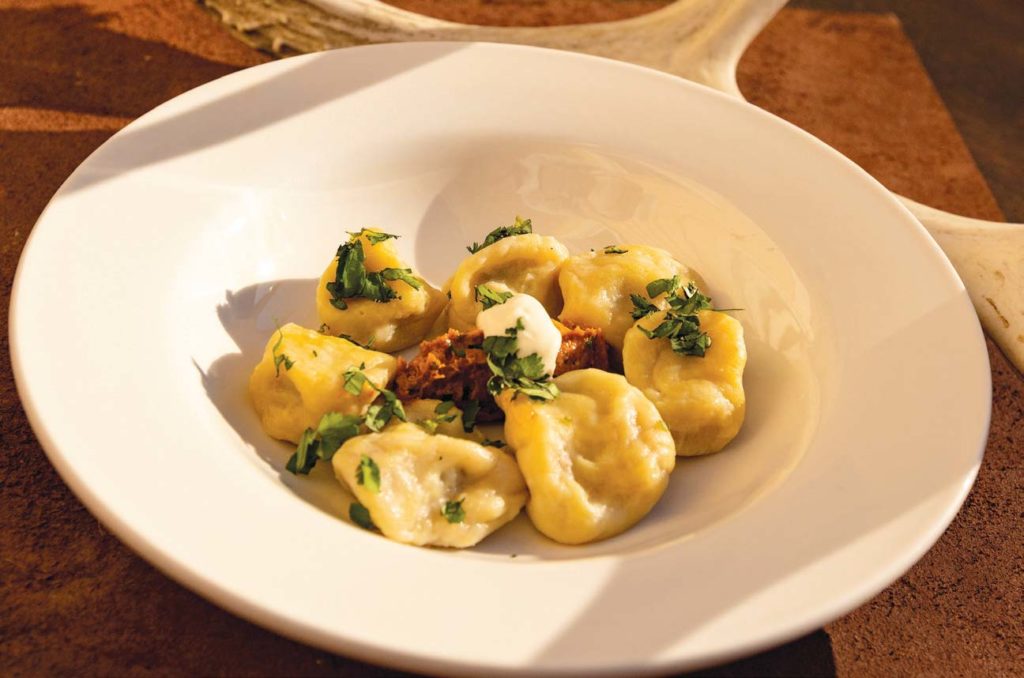
Bozeman
Cook at Blackbird Kitchen, founder of Forage Fed, butcher at Amsterdam Meat Shop
Venison and Canada Goose Pelmeni with Adjika Butter
The venison that I served was from the first deer I shot: a Montana whitetail buck. The goose was provided by my hunting buddy, Franny. In my time working in restaurants, I’ve cooked a lot of food for a lot of people but none of it required as much mental, physical, and emotional effort as that dinner. And the payoff was immense. I’ve never felt that much joy feeding people.
Tom Healy
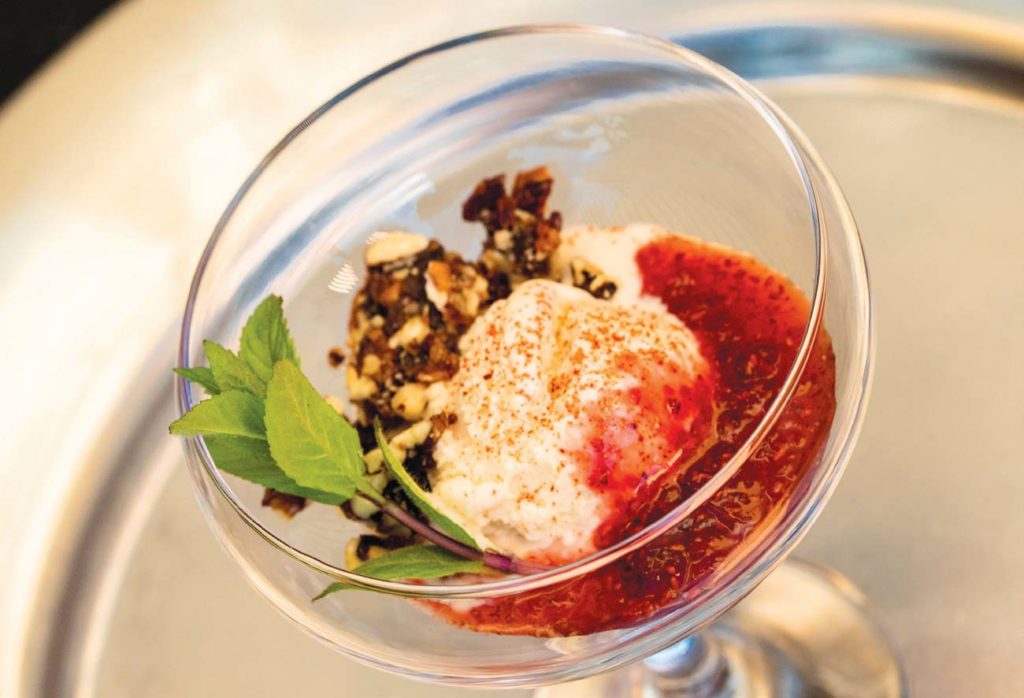
Wisdom
Hunter, timber framer, instructor at Wisdom River Works
Maple Butter Frozen Custard with Elk Bacon Brickle and Thimbleberry Coulis
For me, butchering and bringing wild meat to the table is the most important element of being a “complete hunter.” Unfortunately, hunters and the media often exemplify the process with hoots, hollers, high fives, and acts of triumph. To have the pleasure of cooking, enjoying, and—most importantly—sharing the sustenance of the meat not only ties us to the land and gives dignity to the animal, but it lets us participate in a process as primal as music, dance, language, or craft.


